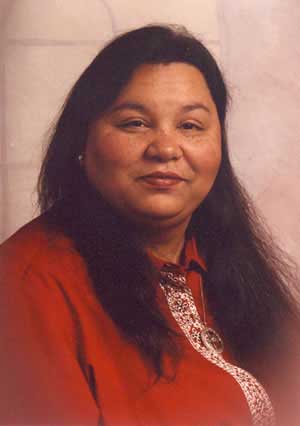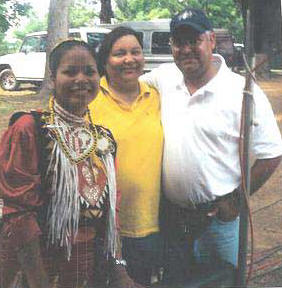 ClayHound Web
- Haliwa-Saponi
Pottery
ClayHound Web
- Haliwa-Saponi
PotteryReturn to:
| Piece on order ... |
|
||||||||||||||
|
|
|
||||||||||||||
|
|
|
||||||||||||||
|
"I’ve always been inspired by the spirit of clay,” says Senora Lynch, an artist from the Haliwa-Saponi tribe, who calls her pottery Living Traditions. “Working in clay takes me back to my childhood days of playing in mud, a free spirit.” Senora Lynch became interested in making pottery at age fourteen, when she assisted the tribe’s elders with a pottery class. She made some pottery herself, but after the class ended, she had neither the opportunity nor the materials to continue. Twenty years later, Senora met a potter who agreed to teach her the craft. She’s been a potter ever since. Senora creates her pottery at home using the hand-coiling method, an exacting process. First, she pounds red clay and rolls it into long ropes. Next, she coils the ropes and stacks them to form the desired vessel shape, pressing them together. She then smooths the clay with her fingers and scrapes it with a tool to make the coils stick together. She continues to smooth and stretch the coils with her fingers, finally polishing the vessel with a rock to make it even smoother and shinier. To make a design, Senora places white clay on top of the red clay and etches patterns in it with a fine tool. The vessel then goes into a kiln near Senora ’s home and is fired for four to eight hours. This process results in exquisite pottery that has been exhibited at the North Carolina Museum of History, 1996 Olympic games in Atlanta, and Smithsonian Institution. Superstitions, sayings, and stories from the Haliwa-Saponi inspire Senora ’s unique designs, as does the natural environment. She uses the dogwood flower because it is a sign of spring, its appearance signaling that the time to plant corn has arrived. Tobacco, the spirit of life, and corn, the staff of life, are sacred plants to the Haliwa-Saponi and also appear in her designs. “My designs are my descriptions of tradition,” Senora explains. Senora is also an educator who teaches students about American Indians and works to overcome racial stereotypes. In her school programs—for kindergarten through twelfth grade, focusing on fourth grade—Senora uses art to teach the history and culture of her people and other North Carolina tribes. Children, she observes, respond positively as she dispels the image of Indians as feather-wearing hunters on horseback. Senora urges teachers to learn more about Indian history and culture. She was nominated for a 2001 North Carolina Folk Heritage Award for her work in promoting and preserving the culture of the Haliwa-Saponi people. (from: http://ncmuseumofhistory.org/ed_md_tw_ai2.htm)
|
|||||||||||||||

